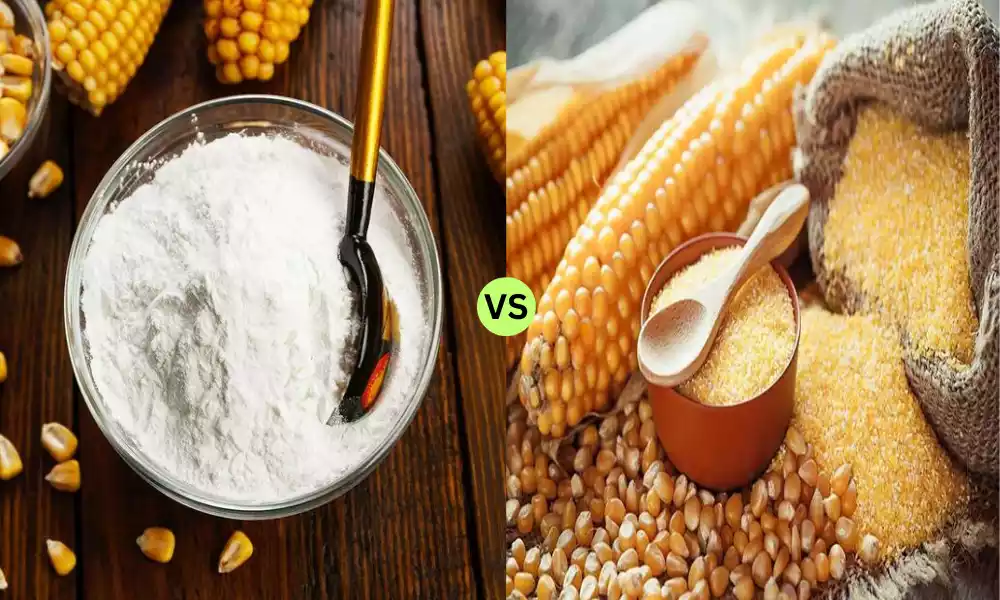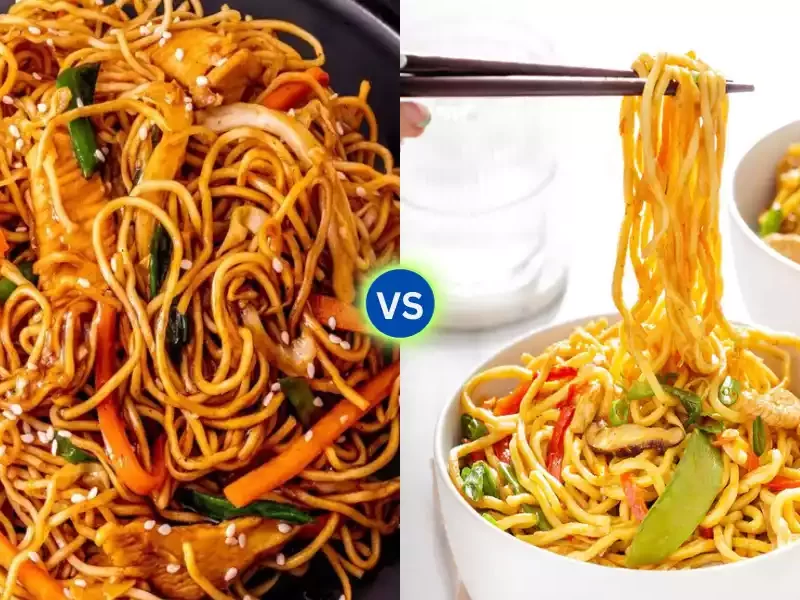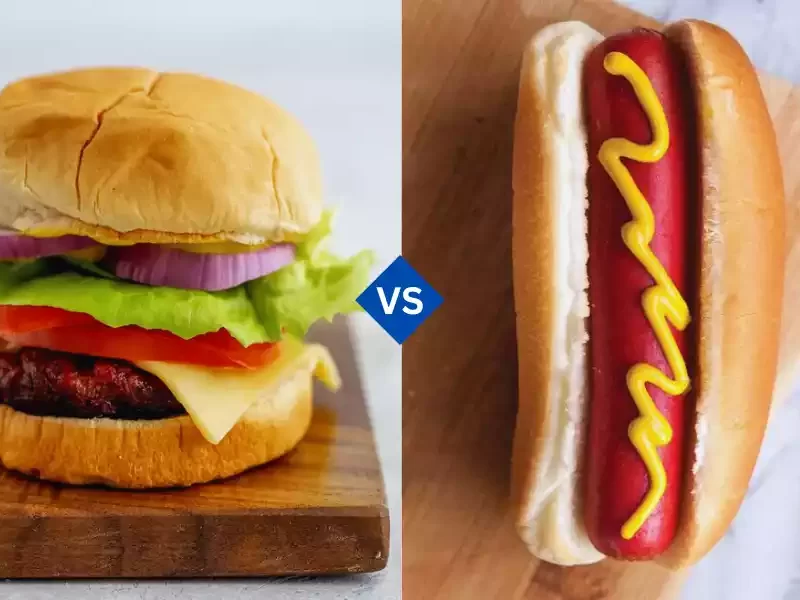Cornstarch and Corn Flour are both derived from corn but serve different purposes in cooking. Cornstarch, a white powdery substance, is primarily used as a thickening agent for sauces, gravies, and desserts due to its ability to form a smooth gel when mixed with a liquid and heated. On the other hand, corn flour, which can refer to a finely ground powder made from whole corn kernels in some regions or simply another name for cornstarch in others, is often used in baking and frying for its light, floury texture. It’s essential to distinguish between the two based on regional terminologies to ensure the desired outcome in recipes.
Cornstarch
Cornstarch is a fine, white, powdery substance derived from the endosperm of the corn kernel. It is primarily used in cooking as a thickening agent for sauces, gravies, soups, and desserts. When mixed with a liquid and heated, cornstarch undergoes a process called gelatinization, which causes it to swell and produce a smooth, thickened mixture.
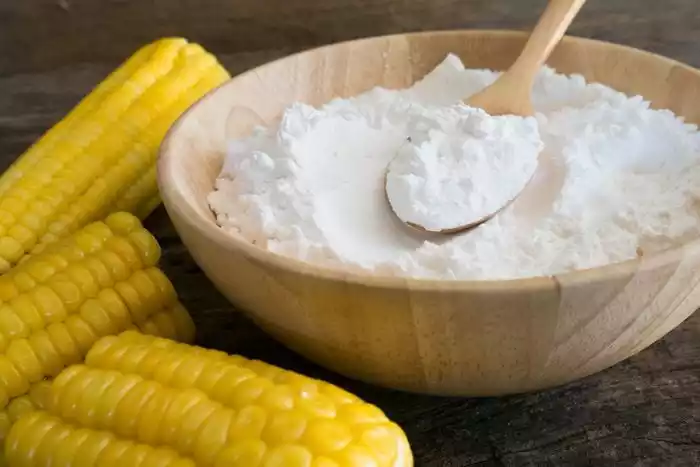
Its neutral flavor and clear thickening quality make it a preferred choice in many culinary applications. Outside of cooking, cornstarch also finds uses in various industries as an anti-caking agent, binder, and filler.
Production Process of Cornstarch
The production process of cornstarch involves several steps to extract the pure starch from corn kernels.
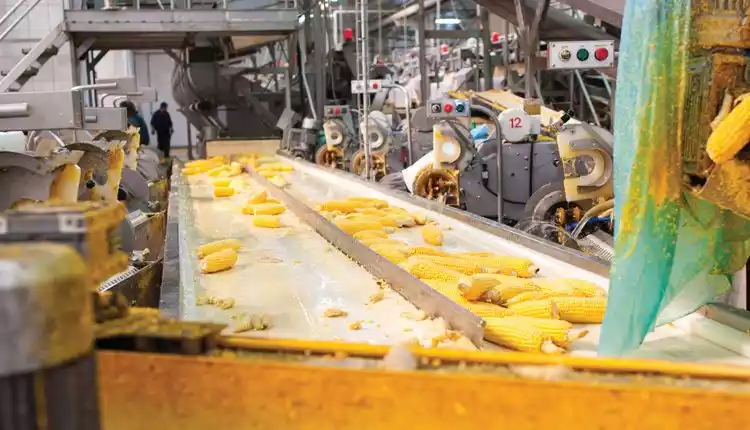
Here’s a simplified overview of the procedure:
- Cleaning: The harvested corn is cleaned to remove impurities like dirt, stones, and other non-corn materials.
- Steeping: Cleaned corn is soaked in warm water, usually with added sulfur dioxide, for 24-48 hours. This softens the kernels and begins to break down the protein and hemicellulose structures.
- Milling: After steeping, the softened kernels are coarsely ground to separate the germ (the oil-rich part) from the rest of the kernel.
- Germ Separation: The ground slurry is spun in centrifugal separators. The lighter germ floats and is separated, while the heavier starch and protein elements sink.
- Fine Grinding and Screening: The remaining slurry is finely ground and screened to separate the fibrous material (pericarp) from the liquid.
- Protein Separation: The liquid slurry, containing both starch and protein (gluten), is passed through centrifugal separators. The heavier starch settles to the bottom, and the lighter gluten floats and is separated.
- Washing: The starch is repeatedly washed to remove any remaining protein and impurities.
- Dewatering: Excess water is drained off, leaving a moist mass of starch.
- Drying: The moist starch is then dried in ovens or hot air dryers to reduce the moisture content.
- Packing: Once dried, the cornstarch is packed into bags or containers for sale.
Throughout this process, other valuable products are also obtained, like corn oil from the germ and corn gluten meal from the separated protein.
Characteristics of Cornstarch
Cornstarch is a popular thickening agent with several distinctive characteristics that make it suitable for various culinary and industrial applications. Here are the primary characteristics of cornstarch:
- White Color: Cornstarch is usually a bright white, fine powder, which allows it to be used in dishes without altering their color.
- Neutral Flavor: It has an almost flavorless taste, so when used as a thickening agent, it doesn’t impart any additional flavor to the dish.
- High Thickening Power: Cornstarch has the ability to rapidly swell and absorb water when heated, making it a potent thickening agent.
- Gelatinization: When mixed with water and heated, cornstarch undergoes a process called gelatinization. This causes the starch molecules to swell, thickening the mixture.
- Sheer Thickening: Sauces thickened with cornstarch are often clear and glossy, unlike those thickened with flour, which can appear opaque.
- Temperature-sensitive: Cornstarch begins to thicken at a specific temperature. Overheating or prolonged cooking can break down the starch and reduce its thickening power.
- Freeze-thaw Stability: Mixtures thickened with cornstarch can sometimes become thin or watery when frozen and then thawed.
- Not Protein-rich: Being extracted from the endosperm of the corn kernel, cornstarch is almost pure starch and doesn’t contain proteins or fats.
- Hygroscopic: Cornstarch can absorb moisture from the environment, which can lead to caking if not stored properly.
- Non-Newtonian Fluid Behavior: When mixed with water, cornstarch can exhibit non-Newtonian fluid behavior. This means its viscosity changes with the applied force, making it act like a liquid when stirred slowly and solidifying when sudden force is applied. This characteristic is demonstrated in the popular “oobleck” experiment, a mixture of cornstarch and water.
- Gluten-free: Cornstarch does not contain gluten, making it suitable for people with gluten sensitivities or celiac disease, though it’s always essential to ensure that cross-contamination hasn’t occurred.
Given these characteristics, cornstarch is used in a variety of dishes, from gravies and sauces to pie fillings and puddings, and also finds applications in non-food industries.
Uses of Cornstarch
Cornstarch is a versatile ingredient with a multitude of uses in both the culinary world and various other industries. Here are some of its primary applications:
Culinary Uses:
- Thickening Agent: Cornstarch is commonly used to thicken sauces, gravies, soups, and stews. When mixed with a cold liquid and then heated, it undergoes gelatinization, causing the mixture to thicken.
- Puddings and Desserts: It serves as a primary thickening ingredient in many puddings, pie fillings, and custards.
- Baking: It can be added to baked goods to give them a finer texture or to reduce protein content by substituting part of the flour.
- Batter and Breading: Used in batters for frying to give a light, crispy crust.
- Anti-caking Agent: It can be sprinkled on foods to prevent them from sticking together, like in shredded cheese or on fruit to prevent sticking in pies.
- Substitute for Eggs: In vegan cooking, a cornstarch slurry (cornstarch mixed with water) can be used as a replacement for eggs in certain recipes.
Non-culinary Uses:
- Laundry Starch: Cornstarch can be used to starch clothes, making them crisp.
- Natural Cleaning: It can be used as a component in natural cleaning products.
- Hair and Body Care: Used in some cosmetics, body powders, and as a hair styling product to give volume or absorb oil.
- Diaper Rash: Some baby powders use cornstarch to soothe and treat diaper rash.
- Polish: It can be used as a polishing agent for silver and other metals.
- Gardening: Used as a natural treatment against pests on plants.
- Play Material for Children: When mixed with water, it creates a non-Newtonian fluid (often called “oobleck”), which acts as both a liquid and a solid. It’s an entertaining and educational material for children to play with.
- Binder and Filler: Used in the manufacturing of various products, such as bioplastics.
- Adhesive: It can be used in certain adhesives, like those for paper and textiles.
This list captures some of the primary uses of cornstarch, but it’s by no means exhaustive. The versatility of cornstarch continues to find new applications across different domains.
Corn Flour
Corn flour refers to the finely ground powder produced from whole corn kernels. Its texture can be likened to wheat flour and is commonly used in baking and cooking to produce breads, tortillas, and other baked goods. In certain regions, especially in the UK, the term “corn flour” is used interchangeably with “cornstarch”; however, in many other places, they are distinct products.
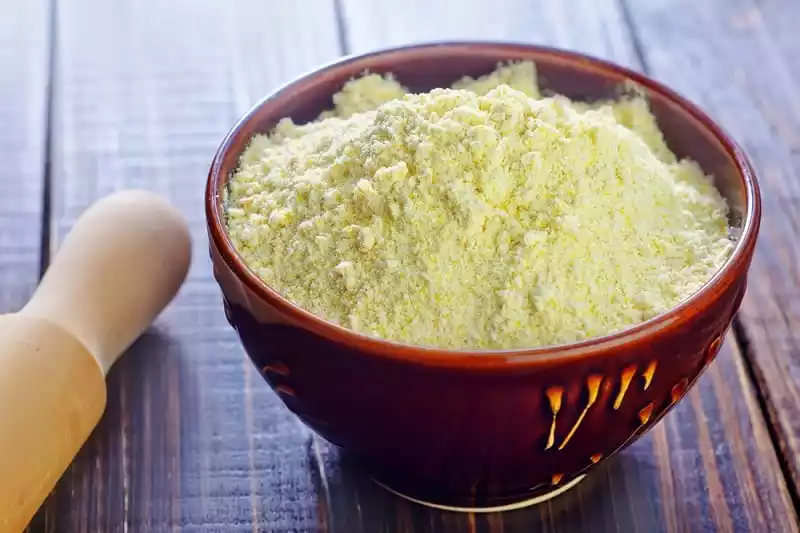
Corn flour, being made from the entire kernel, contains the natural oils, proteins, and fibers of the corn, giving it a yellow hue and a more pronounced corn flavor than the almost flavorless cornstarch, which is extracted only from the starchy endosperm of the corn kernel.
Production Process of Corn Flour
The production process of corn flour is more straightforward than that of cornstarch, as the aim is to grind the whole corn kernel into a fine powder without separating its components.
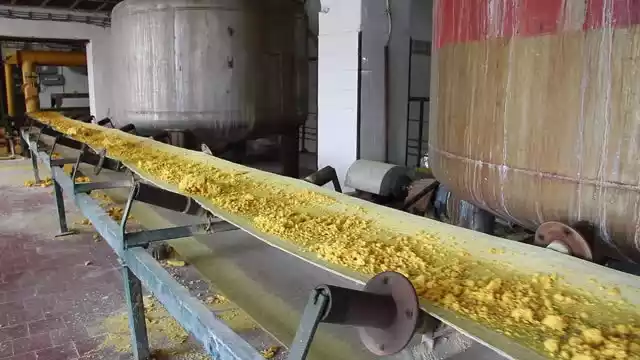
Here’s an overview of the production process for corn flour:
- Cleaning: Newly harvested corn undergoes cleaning to remove impurities such as dirt, stones, husks, and other non-corn materials.
- Degermination (optional): Some corn flour production may include a degermination step to partially or fully remove the germ to increase the flour’s shelf life. This is because the germ contains oils that can cause the flour to become rancid over time. The choice to degerminate often depends on the desired end-product and its intended use.
- Milling: The cleaned (and possibly degerminated) corn kernels are then milled using roller mills, hammer mills, or stone mills. The objective is to crush the kernels and reduce them to a fine powder.
- Sifting: After milling, the flour is sifted to ensure uniformity in its texture. Larger fragments might be milled again, while the fine powder becomes corn flour.
- Packaging: The sifted corn flour is then packaged in bags or containers for sale.
- Storage: The corn flour is stored in cool, dry places to preserve its freshness and quality.
There are different types of corn flour based on the type of corn and processing method used. For instance, masa harina is a type of corn flour made from hominy (corn kernels treated with an alkali). The production process for such specialized flours can have additional steps specific to their preparation.
Characteristics of Corn Flour
Corn flour is a versatile ingredient with various culinary applications. Its characteristics are influenced by the whole corn kernel from which it is derived. Here are the main characteristics of corn flour:
- Yellowish Color: Due to its derivation from the entire corn kernel, corn flour often has a pale yellow color, though the exact hue can vary based on the type of corn used.
- Distinct Flavor: Corn flour has a more pronounced corn flavor compared to cornstarch. This flavor can be a desired characteristic in dishes like tortillas, cornbread, and other baked goods.
- Fine Texture: Corn flour has a consistency similar to that of wheat flour, making it suitable for baking and cooking.
- Nutritional Content: Unlike cornstarch, which is almost pure starch, corn flour contains the natural oils, proteins, and fibers of the corn, making it more nutritionally diverse.
- Gluten-free: Naturally, corn flour does not contain gluten, making it a suitable alternative for people with gluten sensitivities or celiac disease. However, one should ensure it hasn’t been cross-contaminated with gluten-containing grains.
- Binding and Thickening: While not as potent a thickener as cornstarch, corn flour can still be used to thicken soups, sauces, and gravies, especially when a corn flavor is desirable.
- Versatility in Cooking: Corn flour can be used in a variety of recipes, from baking (like muffins and pancakes) to frying as a batter or breading.
- Hygroscopic: Like cornstarch, corn flour can absorb moisture, so it’s essential to store it in a cool, dry place to prevent clumping or spoilage.
- Shelf Life: Due to the presence of natural oils in the germ of the corn, corn flour can go rancid over time, especially if exposed to heat, light, or moisture. It’s best stored in a cool, dark place or even refrigerated for extended shelf life.
- Varieties: There are specialized versions of corn flour, such as masa harina, used for making tortillas. Masa harina is made from hominy, which is corn that has been treated with an alkali, changing its flavor and cooking properties.
These characteristics make corn flour a versatile ingredient, especially in cuisines where corn is a staple. It’s essential to distinguish it from cornstarch, especially in regions where terminology might cause confusion.
Uses of Corn Flour
Corn flour, made from finely ground whole corn kernels, is versatile in its applications. Its uses span a variety of culinary preparations and some non-culinary applications as well. Here’s a rundown of its primary uses:
Culinary Uses:
- Baking: Corn flour is widely used in baking to make breads, muffins, and other baked goods. It gives a distinct corn flavor to baked items.
- Tortillas: Masa harina, a type of corn flour made from hominy (alkali-treated corn), is the staple ingredient for making corn tortillas.
- Thickening Agent: While not as powerful a thickener as cornstarch, corn flour can still be used to thicken sauces, soups, gravies, and stews, especially when a mild corn flavor is desired.
- Batters: Corn flour can be mixed into batters for frying foods, offering a distinctive taste and texture to fried items.
- Pancakes and Waffles: Used as an alternative or in addition to regular flour to make pancakes and waffles with a corn flavor.
- Polenta: While polenta is typically made from coarser cornmeal, corn flour can also be used for a smoother texture.
- Porridge: In some cultures, corn flour is cooked with water or milk to create a type of porridge or mush.
- Breading: Used as a coating for frying or baking foods, such as chicken, fish, or vegetables.
Non-culinary Uses:
- Crafts: Corn flour is sometimes used in crafts, especially for children, like in homemade play dough or as a thickener in certain paints.
- Natural Cleaning: When combined with other ingredients, corn flour can be used as a cleaning agent for some surfaces, helping to add mild abrasive properties.
- Face Masks and Beauty: In some DIY beauty treatments, corn flour is used as a base for face masks or as a component in homemade cosmetics.
- Adhesives: In some contexts, corn flour can be used in the production of natural adhesives, often combined with other ingredients.
While corn flour has numerous uses, it’s essential to note that its exact applications can vary by region and culture. Furthermore, due to the potential confusion with cornstarch in certain areas, always ensure you’re using the correct ingredient for your intended purpose.
Comparison table of Cornstarch and Corn Flour
Below is a comparison table between Cornstarch and Corn Flour:
| Feature | Cornstarch | Corn Flour |
|---|---|---|
| Origin | Derived from the endosperm of the corn kernel. | Made by grinding the whole corn kernel. |
| Texture | Silky and fine powdery. | Slightly grainy texture. |
| Color | White. | Can be white, yellow, or blue (depends on corn variety). |
| Taste | Tasteless. | Distinct corn flavor. |
| Primary Use | Thickening agent for sauces, gravies, etc. | Used in baked goods, tortillas, pancakes, etc. |
| Nutritional Content | Almost purely starch. | Contains proteins, fibers, and other nutrients from the corn. |
| Storage | Store in a cool, dry place. | Best kept in a cool, dry place. |
| Shelf Life | Long, if kept away from moisture. | May turn rancid if not stored properly due to the presence of fats from whole corn. |
| Interchangeability | Not advisable to swap with corn flour in recipes. | Not advisable to swap with cornstarch in recipes. |
This table highlights the primary differences and similarities between cornstarch and corn flour, making it easier to choose the right ingredient for your culinary needs.
Cooking with Cornstarch and Corn Flour
Cornstarch and corn flour are both derived from corn, but they have different textures, flavors, and culinary applications. Here’s how you can cook with each:
Cooking with Cornstarch:
- Thickening Sauces and Gravies: To use cornstarch as a thickening agent, first make a slurry by mixing it with a cold liquid (like water or broth) until smooth. Then, slowly whisk this slurry into your hot liquid, bringing it to a boil until it thickens. Remember, cornstarch will only activate its thickening properties when heated.
- Velveting Meat: In Chinese cooking, cornstarch is often used to “velvet” meat, giving it a soft texture. The meat is marinated with cornstarch and other ingredients before cooking.
- Batters: Cornstarch can be added to batters for frying to create a light, crispy coating on foods like chicken, fish, or vegetables.
- Puddings and Desserts: Many dessert recipes, like puddings and pie fillings, use cornstarch as a primary thickening agent.
- Gluten-Free Baking: For those avoiding gluten, cornstarch can be a useful ingredient in gluten-free flour blends.
Cooking with Corn Flour:
- Baking: Corn flour is great for baking bread, muffins, and other baked goods, especially if you want a pronounced corn flavor.
- Corn Tortillas: Using masa harina, a type of corn flour treated with alkali, you can make traditional corn tortillas.
- Thickening: While it’s not as effective a thickener as cornstarch, corn flour can be used to thicken soups, stews, and sauces. Since it has a corn flavor, it can add depth to the dish.
- Batters: Corn flour can be used in batters for frying, offering a different texture and flavor compared to other flours.
- Pancakes and Waffles: You can replace some or all of the regular flour in pancake or waffle recipes with corn flour for a corn-infused variation.
- Polenta and Porridge: While traditional polenta uses coarser cornmeal, using corn flour can result in a creamier consistency.
Tips for Cooking:
- Lumps: To prevent lumps when using cornstarch, always mix it with a cold liquid first to make a slurry. Then, introduce this to the hot liquid, stirring continuously.
- Overheating: Don’t overcook cornstarch-thickened sauces, as prolonged boiling can break down the starch and make the sauce thin again.
- Substituting: Generally, you’d need less cornstarch than flour when using it as a thickener. A typical ratio is 1 tablespoon of cornstarch to thicken 1 cup of liquid, whereas you might need 2 tablespoons of flour for the same purpose.
- Taste: Remember that corn flour has a distinct corn flavor, which can influence the taste of your dish. Cornstarch, on the other hand, is neutral in flavor.
When incorporating either cornstarch or corn flour into your cooking, understanding their unique properties will help ensure the success of your dishes.
Benefits of Cornstarch and Corn Flour
Cornstarch and corn flour, derived from corn, have a range of benefits that make them valuable in culinary and other applications. Let’s explore their advantages:
Benefits of Cornstarch:
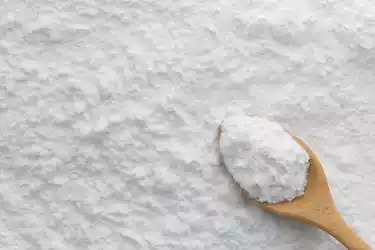
- Neutral Flavor: Cornstarch has a nearly flavorless profile, making it an excellent thickening agent without altering the taste of dishes.
- Potent Thickening Power: A small amount of cornstarch can thicken a large quantity of liquid, making it cost-effective.
- Glossy Finish: It imparts a clear and shiny appearance to sauces, unlike some other thickeners that may render sauces opaque.
- Gluten-free: For those with celiac disease or gluten sensitivities, cornstarch offers a gluten-free alternative to flour-based thickeners.
- Caloric Content: While it is a carbohydrate, cornstarch is used in small quantities, so it doesn’t add a significant number of calories to dishes.
- Versatility: Beyond culinary applications, cornstarch is used in various industries, from textiles to cosmetics, making it a multifaceted product.
Benefits of Corn Flour:
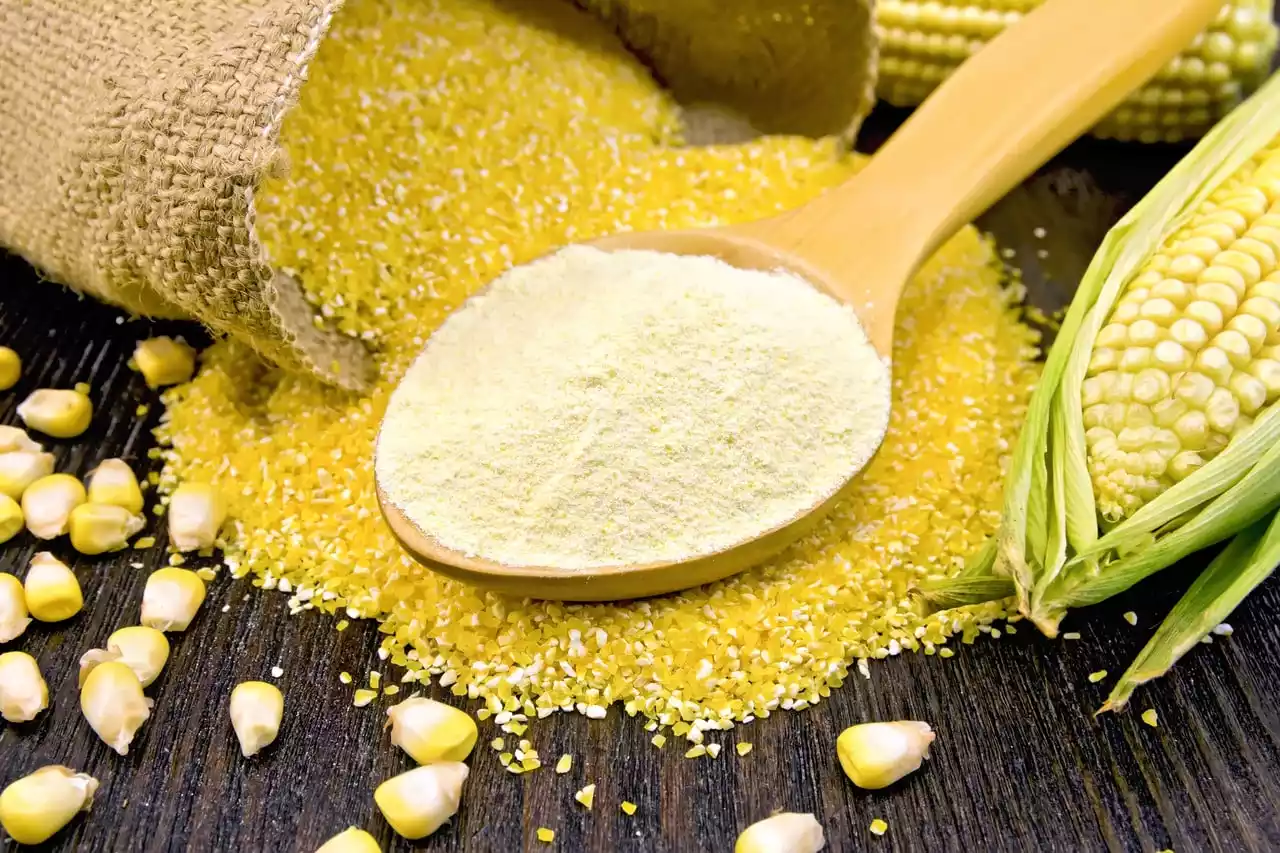
- Nutrient-Rich: Unlike cornstarch, which is almost purely starch, corn flour contains nutrients from the whole corn kernel, including fibers, proteins, vitamins, and minerals.
- Flavor: Corn flour imparts a delightful corn flavor to dishes, making it a preferred ingredient for recipes like tortillas, cornbread, and more.
- Gluten-free: Like cornstarch, corn flour is naturally gluten-free, offering a baking and cooking alternative for those avoiding gluten.
- Textural Element: Corn flour provides a unique texture in baked goods, which can be softer and more crumbly than those made with wheat flour.
- Diverse Applications: It can be used in various recipes, from baking to thickening, giving it a wide range of culinary applications.
- Whole Grain Advantage: Since corn flour is made from the entire corn kernel, it retains the health benefits associated with whole grains.
- Easily Digestible: Many people find products made from corn flour easier to digest compared to those made from certain other grains.
Health Considerations:
While both cornstarch and corn flour have benefits, it’s crucial to use them in moderation and within the context of a balanced diet. Relying heavily on any single ingredient can lead to nutritional imbalances. If used excessively, corn-based products can lead to excessive calorie or carbohydrate intake. Always consider your dietary needs and consult with a nutritionist or healthcare provider if uncertain about integrating them into your diet.
Potential Drawbacks of Cornstarch and Corn Flour
Like all ingredients, cornstarch and corn flour have their potential drawbacks when used in various applications or consumed in specific contexts. Here’s a look at some of the potential concerns:
Potential Drawbacks of Cornstarch:
- Nutritional Value: Cornstarch is almost purely starch, meaning it’s high in carbohydrates and offers limited nutritional benefits in terms of vitamins, minerals, or proteins.
- Blood Sugar: Due to its high carbohydrate content, excessive consumption can result in rapid spikes in blood sugar, which may be a concern for diabetics or those watching their glucose levels.
- Over-thickening: When not used in the correct proportions or not mixed properly, cornstarch can make dishes overly thick or give them a gloopy texture.
- Raw Taste: If not cooked long enough, cornstarch can leave a chalky or raw flavor in dishes.
- Breakdown When Acidic or Overheated: Cornstarch can lose its thickening power in highly acidic recipes or if overcooked.
- Allergies: Though rare, some people might be allergic or sensitive to corn products, including cornstarch.
- Non-organic Sources: Many corn crops are genetically modified (GMO). If this is a concern, one would need to seek out non-GMO or organic cornstarch.
Potential Drawbacks of Corn Flour:
- Nutritional Imbalance: While corn flour contains more nutrients than cornstarch, relying too heavily on it (or any single grain) can lead to a lack of dietary diversity.
- Caloric Density: Like all flours, corn flour is calorically dense, and excessive consumption can contribute to weight gain if not balanced with physical activity.
- Texture: In baking, corn flour can produce a heavier or crumbly texture compared to wheat flour, which might not be desirable in all recipes.
- Flavor: The distinct taste of corn flour might not be suitable for all dishes, especially those where a neutral flavor is desired.
- Rancidity: Corn flour contains natural oils from the corn kernel, which can go rancid if not stored correctly.
- Gluten-free Confusion: While corn flour is naturally gluten-free, cross-contamination during processing can be a concern for those with celiac disease or severe gluten sensitivities.
- GMO Concerns: As with cornstarch, there are concerns about GMOs in corn production. Those wanting to avoid GMOs should opt for organic or certified non-GMO corn flour.
- Digestibility: Some people might find corn products hard to digest, especially if consumed in large quantities.
As with any food product, the key is moderation and understanding how each ingredient fits into one’s overall dietary and health needs. It’s also essential to be aware of individual sensitivities or allergies.
Storing Tips of Cornstarch and Corn Flour
Storing cornstarch and corn flour properly is crucial to maintain their quality and effectiveness in culinary applications. Here are some storing tips specifically for these two products:
Cornstarch:
- Cool, Dry Place: Cornstarch should be stored in a cool, dry place, away from humidity and moisture, which can cause it to clump together.
- Airtight Container: Once opened, transfer cornstarch to an airtight container to prevent moisture and contaminants from getting in. If you keep it in its original box, ensure the top is sealed well.
- Away from Strong Odors: Store cornstarch away from foods or products with strong odors, as it can absorb these smells.
- Long Shelf Life: Cornstarch can last indefinitely if stored properly. However, for best results, try to use it within a year.
- Check for Clumps: If the cornstarch has become hard or has large clumps, it might have been exposed to moisture. While it’s still safe to use, its performance might be affected.
Corn Flour:
- Cool, Dry Place: Similar to cornstarch, corn flour should be stored in a cool, dry location.
- Airtight Container: Once its original packaging is opened, transfer corn flour to an airtight container to protect it from moisture, pests, and contaminants.
- Away from Direct Sunlight: Prolonged exposure to sunlight can affect the color and flavor of corn flour.
- Use Within a Year: While it might not necessarily spoil quickly, corn flour is best used within a year for optimal freshness and flavor.
- Rancidity Check: Because corn flour contains fats from the corn kernel, it can go rancid. If it smells off or unpleasant, it’s best to discard it.
- Freezing for Long-term Storage: If you don’t plan on using corn flour regularly, you can store it in the freezer to extend its shelf life. Make sure it’s in a well-sealed container or bag to prevent freezer burn and moisture.
By following these storage tips, you’ll ensure that your cornstarch and corn flour remain fresh and effective for all your cooking and baking needs.
Conclusion
Cornstarch and Corn Flour, both derived from corn, serve distinct roles in the culinary world. Cornstarch, a refined starch, is primarily used as a thickening agent in sauces and gravies, offering a clear, glossy finish. On the other hand, corn flour, made from the whole corn kernel, is a versatile ingredient used in baking, frying, and as a base for various dishes.
While they share a common origin, their differing characteristics, from texture to culinary applications, highlight the importance of using each appropriately in the kitchen. Proper storage of both is essential to retain their quality, ensuring delectable outcomes in recipes.

